
The Slavs are the largest group of Indo-European peoples and at the same time the least documented. Hardly any sources relating to the Slavs’ religion have survived from before Christianisation, making a complete reconstruction of their most ancient beliefs extremely difficult.
However, despite the gradual process of Christianisation that the Slavic countries underwent over the centuries, one can still find many rituals inherited from the culture of their ancestors, such as the drowning of Marzanna, scaring children with Baba Yaga or the Night of Kupala.
If you would like to learn more about Slavic mythology and discover the most important symbols that are part of the beliefs of the ancient Slavs, I invite you to read on.
Contents
Kolovrot
Svarzyca, svarga or kolovrot is a symbol dedicated to the god of the sun, fire and blacksmith – Svarog.
This Slavic version of the swastika, with rays extending from the centre, initially had the shape of an isoscelesque cross with its arms bent at a right angle, but over time it gradually began to change, becoming the eight-armed svargas we know today as kolovrot.
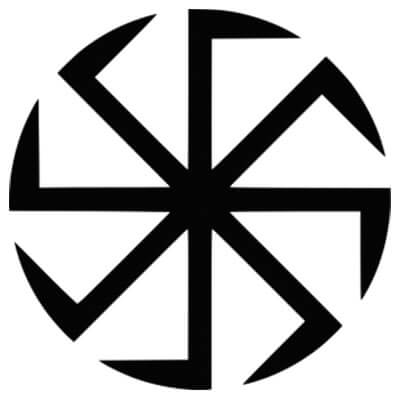
The right-handed Kolovrot, with its arms pointing to the right, imitates the movement of the Sun, observed from the northern hemisphere, hence its relationship to light and day. Kolovrots turning left are less popular and if they appeared, they referred to darkness, night and magic.
Svarga is a sign that attracts happiness and prosperity, a fertility charm and protection against evil powers. It symbolizes life and the sun that is giving the warmth.
The kolovrot also provides a symbolism that refers to infinity, invariability, repeated cycles, and a constant course of life.
Drawn on the buildings, it protected the homes of the ancient Slavs from evil spirits and the destructive influence of the climate. It was also popular to put it on clothes, weapons or coins.
Perun symbol
Perun, the lord of the lightning, is one of the most important deities in the Slavic beliefs. The god of thunder, storms and warriors.
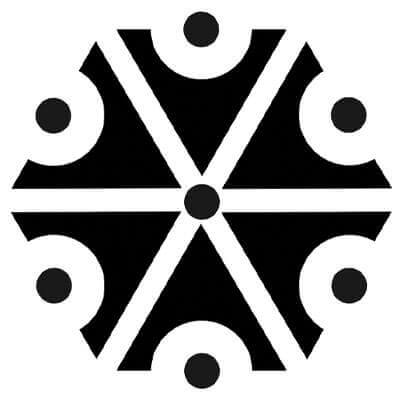
The symbol of Perun is a hexagonal figure that provides protection against lightning, storms and other disasters. There is also a simplified version of this symbol.
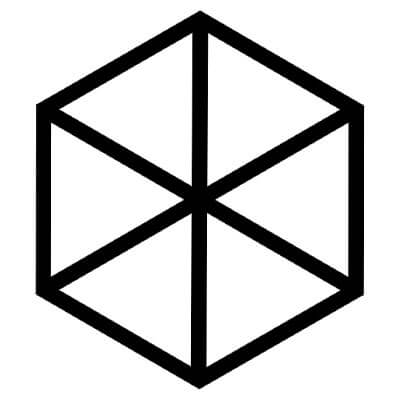
The first Slavs engraved this symbol on the beams of their houses, thus protecting themselves from storms and lightning. The use of the sign of Perun was so ingrained in the population that it survived the times of Christianisation and can still be found today, in the form of a rosette from the Carpathians or from Podhale in southern Poland.
Veles symbol
Veles, Volos, Weles or Voloh. Veles is one of the main gods of Slavic mythology, brother and opponent of Perun. He ruled the land of the dead, was the protector of merchants, travellers and livestock. His symbol was used to seal contracts and oaths. He was the guardian of craftsmanship, art and magic. A god of wealth, gold and fortune.

The symbol of Veles is an inverted triangle with two “horns” at the top. It is related to his care of horned cattle. This symbol attracts prosperity, wealth and good fortune.
Mokosh
Mokosz or Mokoš, Mother Earth, the patron saint of women, her work and her destiny. She is the goddess of sheep shearing, spinning, weaving, baking bread and protecting women during childbirth.
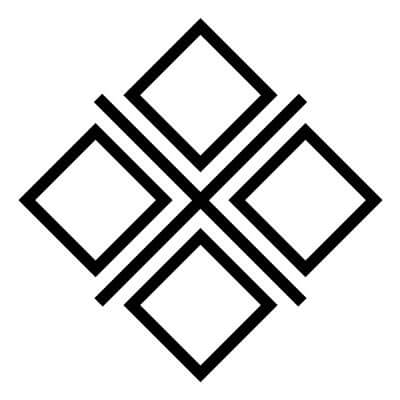
Her name means “humidity”, so she was also often called “mother of the moist earth”. She was one of the most important deities of the Slavic pantheon.
Partner of Perun and Veles. Her abduction by Veles was what caused the struggle between these gods.
Dazhbog
Dažbog, Dazhdbog, Dazhbog, Dajbog, Daybog, Dabog, or Dadzbóga, a god related to solar worship. Depending on the sources, Svarog’s son or Svarog himself.

His name comes from the word “give” and “god”. He was the god of wealth, prosperity and happiness.
Lada
Lada (or Łada) was the goddess of love, beauty and fertility, worshipped by the Baltic and Slavic peoples.
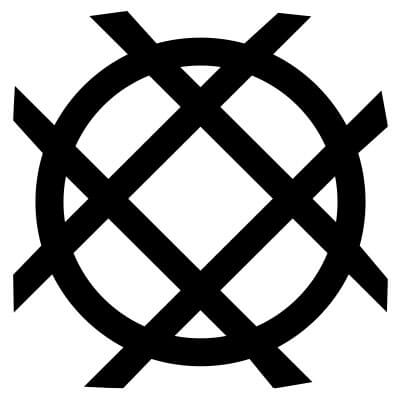
It is believed that she had a twin brother, Lado. Together they became a cult object for activities related to the sun, water and crops. It was to them that people addressed their songs during planting, harvesting or wedding.
Nemiza
Nemiza is the Slavic god of misery, the one who cuts the thread of life and the one who brings death. However, Nemiza was also seen as the one who ends suffering and brings the soul to a new life.

Sometimes he was depicted as a man with a wing and a dove with wings outstretched on his chest, and sometimes as a naked woman with an eagle by her side.
Rod
According to the beliefs of the East and South Slavs, Rod is the creator of the world, the most important god, the patron of the family, the ancestors and the destiny. His name is derived from the words: “rod, rodzina” which means family, but also from the words which mean birth and cultivation.

The cult of Rod began to lose importance around the 9th century, in favour of Perun, Svetovid or Svarog, depending on the region.
Svetovid
The cult of Rod began to lose importance around the 9th century, in favour of Perun, Svetovid or Svarog, depending on the region.
In some sources he is described as the creator of the earth and man. In later centuries his cult evolved and he began to be seen as the god of war, the sun, fertility, abundance and divination.

The figure of Svetovid was represented with 4 heads, each one directed in a different direction. Some investigators maintain that this image personifies the faces of the gods: Perún, Svarog, Lada and Mokosh.
Svetovid’s message was interpreted by a white horse. It is believed that one of the most important priests rolled his dice and then read the future from the animal’s behaviour.
Lunula
Centuries ago, it was believed in Slavic villages that women were more susceptible to the actions of magical and evil forces and therefore needed special protection.
The moon has become a symbol of femininity and feminine energy, and a protector of women. This symbolism is still alive among the Slavic peoples.

Lunula is a crescent-shaped pendant, which used to be worn by Slavic women, both single and married. Its name comes from the term the Slavs used to describe the moon – “łuna”. Most of the time the pendant was made using precious stones, and using silver as the dominant metal.
Lunula was a powerful talisman, which boosted fertility, cyclicality, and also crops. It was used to strengthen the bonds of marriage and cured female ailments. It was also an amulet that helped to win the favour of the gods, protecting against the charms and forces of evil. It represented intuition and mystery.
God’s hands
The hands of God is a symbol that was first found during archaeological excavations in 1936. It was found in an ashtray, dating from the 3rd-4th century AD, which was lost during the riots of the war. A plaster copy of it is known today.
One of the theories states that this symbol was an ideogram representing the supreme god.

The sign consists of a cross (hands with the power of lightning), finished with a comb (five or six fingers). The arms of the cross are directed towards the four sides of the world, which are supposed to express the omnipotence of the creator, thus being a symbol of the universe and balance.
Sometimes, in the four fields of the cross, between the shoulders, there are svargas: two doubles and two singles. They symbolise the duality of fire: the doubles refer to Perun, the god of lightning; and the doubles refer to Svarog and his son Svarozyc, the gods of fire.
Another theory assumes that the very arms of the cross and its end may refer to Perun, symbolizing violent atmospheric phenomena. Other studies state that the combs/fingers symbolise the rays of the Svarozyc sun.
Regardless of the theories, the hands of god express an aspect related to the sun and fire, and also to power and care, thus signifying an overwhelming power revered by the Slavs.
Today it is a symbol used by those who still believe in the native Slavic faith, especially in the Native Polish Church.